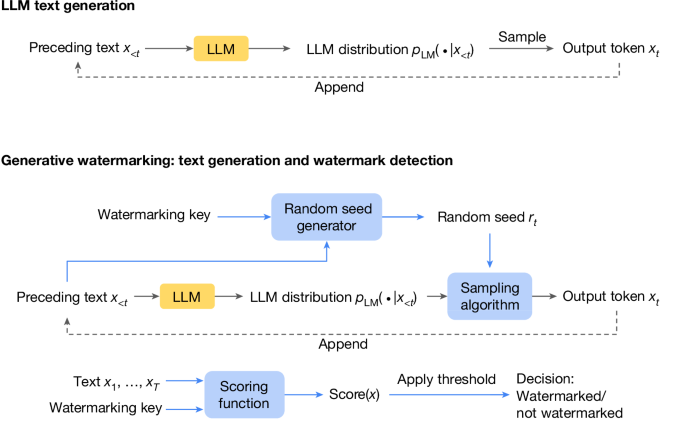SynthID-Text: A Scalable Watermarking Scheme for Identifying Large Language Model-Generated Text
This article introduces a novel text watermarking technique called SynthID-Text designed to address the challenge of identifying text generated by large language models (LLMs).
The article highlights the increasing realism and potential misuse of LLM-generated text, emphasizing the need for reliable identification methods. It argues that existing watermarking techniques have fallen short in terms of practicality, particularly regarding text quality, detectability, and computational efficiency.
SynthID-Text is presented as a solution that overcomes these limitations. It operates by subtly modifying the sampling procedure during text generation without impacting the LLM training process. The watermark itself is designed to be undetectable to human readers but easily identifiable by an algorithm, ensuring the text's usability and the watermark's effectiveness.
The article emphasizes SynthID-Text's scalability, achieved through integration with speculative sampling, a common technique for enhancing LLM efficiency. This integration ensures the watermarking process doesn't significantly impact the performance of large-scale LLM deployments.
Empirical evidence is presented to support SynthID-Text's effectiveness. Evaluations across various LLMs demonstrate its superior detectability compared to existing methods. Moreover, standard benchmarks and human evaluations confirm that SynthID-Text doesn't compromise the quality or capabilities of the LLMs it's applied to.
The article concludes by highlighting a live experiment involving nearly 20 million responses from the Gemini LLM, further validating SynthID-Text's practicality and lack of impact on text quality. The authors express hope that SynthID-Text will encourage responsible LLM use and further development in the field of text watermarking.
自定义摘要
使用 AI 改写
生成参考文献
翻译原文
翻译成其他语言
生成思维导图
从原文生成
访问来源
www.nature.com
Scalable watermarking for identifying large language model outputs - Nature
从中提取的关键见解
by Sumanth Dath... 在 www.nature.com 10-23-2024
https://www.nature.com/articles/s41586-024-08025-4
更深入的查询
